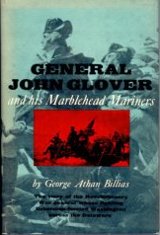

A leading member of the Marblehead Committee of Correspondence, in 1775 he formed the Marblehead militia (“Glover’s Regiment”), later the 14th Continental Regiment. Made up largely of shipwrights and sailors, his “Marblehead Marines” trained as infantrymen and later became known as the “amphibious regiment” for their role in ferrying troops across the East River following the Battle of Long Island and across the Delaware River before the Battle of Trenton. They also formed the rear guard in action at Pelham, New York and became General Washington’s personal guard.
In 1775, Glover also outfitted Hannah, the Continental Navy’s first armed vessel. Promoted brigadier general in February 1777, he participated in the Saratoga campaign, afterward returning prisoners to Boston for transport to England.
While stationed at West Point in 1780, General Glover served on the court that, on 29 September, convicted Major John André of spying.
Early in 1782, he returned to Massachusetts for recruiting but retired from active duty when his health began to fail. In 1788, he served as a member of the Massachusetts constitutional ratification convention and later in the Massachusetts legislature. He died at Marblehead 30 January 1797.
On 20 November 1783, a charter for the Town of Glover in northern Vermont was granted to 62 settlers, most of whom had served in Glover’s Regiment. Glover’s Rock in Bronx, New York is another memorial.